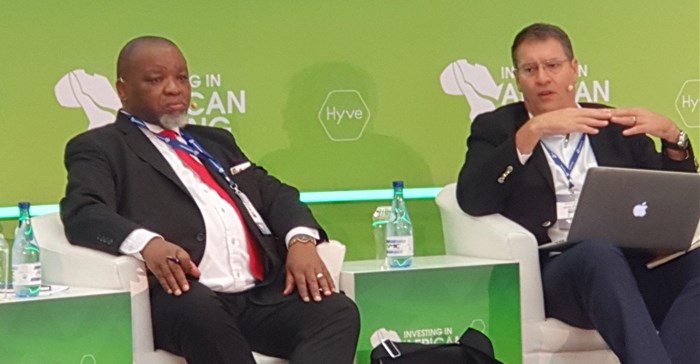
“Junior miners are important in driving greenfields development,” Mineral Resources and Energy Minister Gwede Mantashe said in conversation with Errol Smart, CEO of Orion Minerals at the Investing in African Mining Indaba 2020 in Cape Town.
The minister pointed out that there were several areas were junior miners needed help, including financing and skills development. “We are going to change the old way of training.”
Access to geological information, markets and research and development and innovation were also key to smoothing the way for junior miners.
Compliance was another aspect Mantashe touched on, saying the Mining Charter III placed less burden on junior miners in terms of employee numbers and the 30% black economic empowerment criteria.
The mining charter provides that small mining companies with an annual turnover of less than R10m are exempt from complying with the employment equity requirements when there are fewer than 10 employees, and are exempt from complying with the “inclusive procurement, enterprise and supplier development” requirements. Junior miners with an annual turnover of between R10m and R150m must comply with the employment equity requirements at group level and the inclusive procurement requirements. Junior miners with an annual turnover of less than R150m, are required to have 30%t BEE shareholding, but are not obliged to meet the percentages prescribed under the charter. The holders of prospecting rights will not be subject to the provisions of the charter.
Smart asked how the thresholds of R10m and R150m were arrived at, to which the minister replied that the thresholds were a form of encouragement for growth. “Junior miners shouldn’t stagnate after R150m , they need to commit to growth. After R150m, you’re on your own because then you have access to financing.”
Mantashe also said that the mining industry must change its narrative. “Miners like negative narrative. It must become a message of hope, because then people will put money there (in the industry).
He said that attention given to the reduction in fatalities in 2019 did not garner attention for very long, and within days the headlines were about retrieving the bodies from the container in the Lily Mine disaster. "We are working on reopening Lily Mine, we can only successfully reach the container if the mine is working. This negative narrative is impacting on the views of investors.”
“I’m encouraging young people to invest in mining, but not as shareholders where your relationship with mining is a dividend. But if you open a mine, your relationship is with mining,” Mantashe said.
He added that that when Mining Charter III was drafted, all four major labour movements were involved. “No decisions will be taken without workers, as it is them that converts investment into wealth.”
